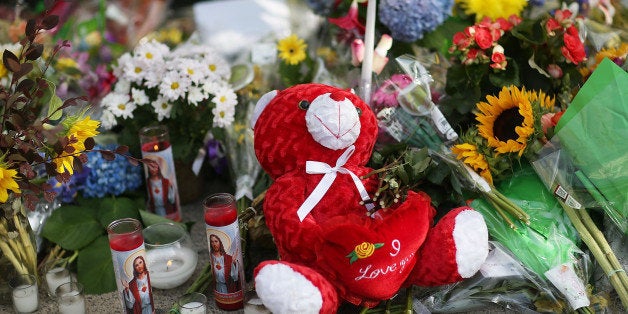
When I was in grade school, I had five close friends--other Black boys I met on my block, at my church or through sports. Today, I am the only one still alive. Four of them died by violence.
Now I have three boys of my own, all in grade school. When my sons are my age, I want them to reconnect with old friends, not remember ones who were killed. I want them to go to reunions, not funerals.
For that to come true, we need changes in how individuals, families, communities and the government itself approaches safety, especially in relation to the communities of color that disproportionately experience crime and violence.
In California, victims of violent crime are more likely to be low-income, young (particularly under 30), and Latino or African-American. African-Americans are far more likely than whites to be victims of homicide.
Nationally, the numbers are similar. In 2010, there were 11,078 gun-related homicides in the U.S. - more than 30 people shot and killed every day. Three out of four of them were people of color, according to the Centers for Disease Control and Prevention. Nearly half of all homicide deaths (47 percent) were black males.
All this time, the media has created this notion that we should be scared of people of color, particularly young, black males, when the truth is we should be scared for them. And that concern should inform policies and investments into helping crime survivors avoid future harm.
Experiencing crime often is a taxing journey of grief and expenses (funerals, medical care, etc.). Failing to address the trauma that survivors experience can lead to individuals falling into depression, substance abuse, financial ruin and possibly hurting themselves or others. Additionally, research shows that those who are most vulnerable to crime are also most likely to experience repeat victimization.
As in much of the justice system, racial disparities exist with crime survivor experiences after a traumatic crime. A survey Californians for Safety and Justice conducted with California crime survivors in 2013 found that African Americans were both the most interested and least aware of the services available to them. That means that the majority of survivors are left alone with their trauma, not aware that the government offers opportunities for mental health counseling, reimbursement of certain expenses, assistance navigating the justice system process and more.
Outreach to survivors about available help is a major missed opportunity, but many victim services are also physically out of reach for the very populations most vulnerable to future harm. Government offices are not centrally located near high-crime neighborhoods, and too many of these services are in agencies or offices that have built little trust with communities who experience crime the most.
This must change - and can, now that the federal government is providing unprecedented levels of funding for victim support. These funds will be wasted, though, if the communities most affected by violence are not at the center of the investment strategy.
The U.S. government's fiscal year budget for 2015 raised the funding for victim services (started by the Victims of Crime Act, or VOCA) from $745 million in the last fiscal year to $2.361 billion in the current one - an increase of $1.6 billion. These funds will go to states to disperse to existing agencies that serve victims.
The problem is, however, these agencies, despite their best efforts, are not reaching and serving most crime survivors. What we need is not more money for the same recipients but rather more recipients.
In our work with crime survivors in California, we have encountered countless small nonprofits working on the frontlines of violence in their communities. Often started by a victim of crime, these grassroots groups know their target populations intimately, as well as their risk factors and needs.
Even small investments in their work will have a tremendous impact in linking more survivors to the services that can help them to recover and avoid future harm. That is why we and partners in California--and beyond--will be advocating that the federal government ensure that a small percentage of the new VOCA fund go to community nonprofits working with and on behalf of survivors, especially those in communities of color.
I know first hand that victim services never reached the families of my friends who were killed by violence. That sad fact drives my work to change outcomes for other individuals and families affected by crime, not just as a better response to crime but also a strategy to prevent it.
This blog is part three of a series from the Rosenberg Foundation on race and criminal justice.